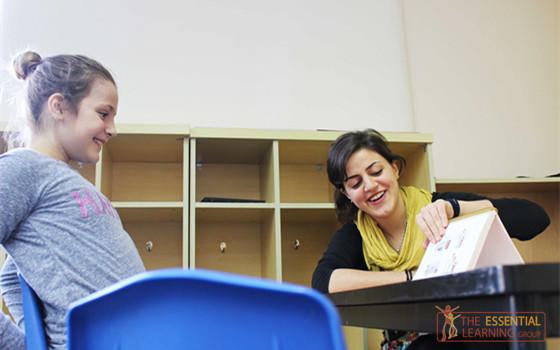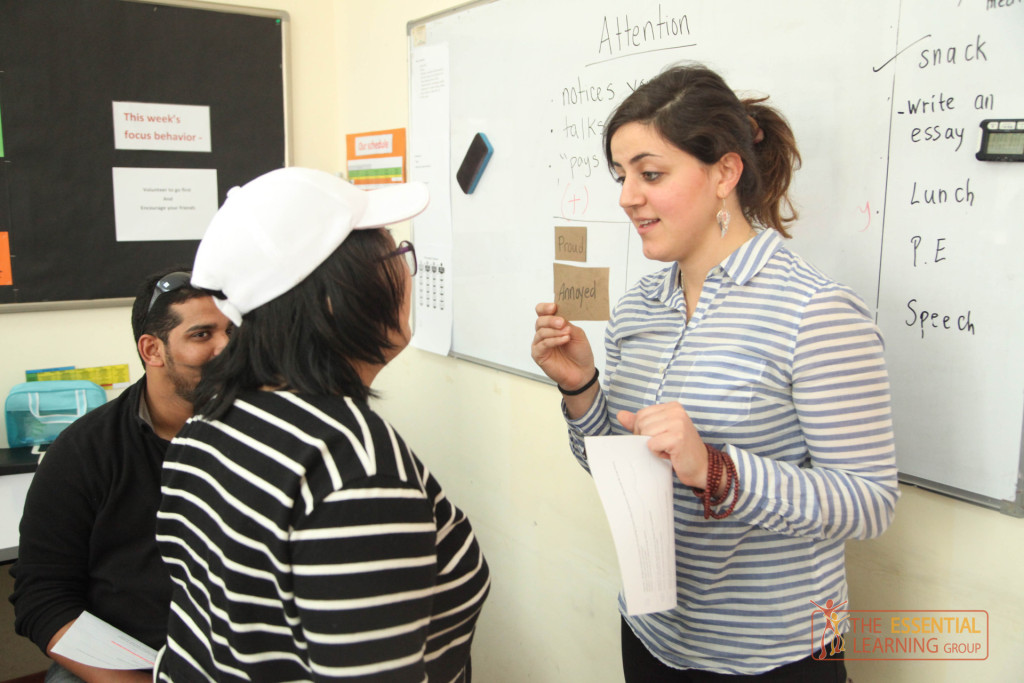By Reyhaneh Rajabzadeh, Speech-Language Pathologist and Ronni Rowland, Writer
Do you have a student who is often “disruptive” and “silly” during class? Does your child frequently laugh “hysterically” without knowing why or get “overly emotional” when unexpected events occur? These and other “misbehaviors” may actually be due to a deficit in language—and can be managed by teachers and parents with some patient guidance in self-awareness and using language to communicate emotions.
Language and Managing Emotions:
If you’ve ruled out a language disorder and the student is able to follow directions, then maybe he or she just needs help in expressing emotions.
Children who can identify how they feel are generally less frustrated and exhibit less negative, reactive behaviors at home and in the classroom. Reyhaneh Rajabzadeh, Speech-Language Pathologist with the Essential Learning Group (ELG), shares four steps for helping children communicate their emotions verbally.
Steps to Improve Behavior through Language:
Step 1. Teach emotional awareness.
The first step to improving social emotional regulation is to teach an awareness of emotion. “In order to feel that we are understood and respected, we need to be able to firstly, identify exactly how it is that we are feeling and why,” explains Rajabzadeh, “and then be able to communicate this to others.”
Promote children’s emotional awareness and metacognitive skills by asking, “How do you feel?” Then encourage children to ask themselves, “How am I feeling?” Remember that ALL emotions are acceptable for expression.
Step 2. Identify emotions.
Next, teach children the language required to describe their emotions. They may know they are having an “off” day, but will feel more in control if they can accurately describe what they feel.
Help children answer the question, “What is that feeling called?” Discuss the meaning of emotions like disappointed, lonely, content, and surprised. Practice identifying emotions with language like:
- I am feeling sad.
- I am angry.
- I am happy.
- I’m feeling confused.
Step 3. What do I need when I feel_______?
Help students identify what they need when they feel tired, upset, excited or confused. In this step, it’s especially important to give children what they need (within reason!) after they have successfully identified and expressed their needs. If needs are not met, there is little incentive for children to continue expressing themselves.
Again, give students opportunities to use language to describe what they need:
- I need a break.
- I need some help.
- I would like to do that again.
- I need you to explain that again.
Step 4. Generalize in the classroom and at home.
Ask the child how he or she feels in natural contexts (such as when conflict occurs or the child is feeling emotional at home or school). “You can use the same set of visuals that we use for therapy, such as emotion cards, and help students resolve the conflict by communicating what they may need,” Rajabzadeh says.
I Feel Good:
Give children a “safe place” to express their emotions without judgment and, as situations arise, model how to identify your own emotions and satisfy needs. Rajabzadeh explains that language gives feelings a name and sets the stage for a plan about what to do. “This brings us one step closer to managing and regulating emotions.”


